The content of the article
Once among the nobles was very popular quail hunting. Catching this small active bird was difficult, but interesting. What do we know about this little bird living in wild forests and in captivity?
Description
The type of common quail is a bird belonging to the order of the goose-shaped, partridge family. The size is small - in the chicken family it is considered the smallest.
- Weight - from 100 to 150 grams.
- The body has a length of 16 to 20 cm.
- Fairly long wings spanning from 32 to 35 cm.
- Very small, hardly distinguishable, tail.
The plumage of quails is rather peculiar color with a predominance of yellowish-brown and grayish-black flowers on the top of the body. Occasionally there may be black specks and blotches of ocher hues. Vertex black with brownish tint, head crossed by several longitudinal brownish stripes.
The areas on the throat, chin and cheeks are darker in males than in females.Also, the goiter of male quails is much lighter - bright red in color to attract the attention of females during the mating season.
The abdomen is lighter than the back, with black, brown and whitish patches. This color is needed for camouflage purposes and helps the birds to survive - they merge with the earth's surface and become almost imperceptible to predators, enemies and human hunters.
The iris of the eyes is colored brown, the beak is small, brown (sometimes light) in color. Short, but widely spaced, legs allow with high speed to move on the ground, running away from predators and fleeing from hunters.
Habitat
It inhabits almost the entire surface of the earth, with the exception of the cold northern regions. It lives in many European countries, in North Africa, in the south of the African continent, there are a lot of places of residence in the countries of Asia. It belongs to the wandering species - in the fall they fly away for wintering, returning to their native lands with the onset of spring. Hibernate in Africa, Egypt, India. Some of the birds living in Russia choose the southern parts of the country and the foothills of the North Caucasus for winter residence.Only birds whose native land are Africa and Madagascar do not fly away for winter.
Nesting and breeding
Nests are settled, as a rule, on floodplain fields or meadows with high grass hiding from others, or birds are built in high scrublands. On the construction are small twigs, the bottom is covered with bunches of last year's dry grass and own feathers. It is laid at a time from 8 to 15, sometimes 20 eggs. Hatching lasts 15-20 days. The male at this time is engaged in the search and delivery of food, protects the nest, not allowing outsiders, sometimes talks with the hen.
Hatching chicks are born with a thick coat and, barely having time to dry off, immediately after the mother leaves the nest. The youngsters look for food on their own.The pubescence of the young will be quail, similar in color to the color of the grass, in which they successfully hide from enemies. On the twentieth day of life, the chicks begin to fly.
After about 50-55 days, they grow to the size of adult birds, after 70 days puberty begins, and they begin to live independently, making pairs and building nests.
Nutrition
In the first weeks of life, the quail chicks feed on animal food - small insects, worms, caterpillars and other invertebrates, which the parents get by digging in the ground and raking it. A little later, the vegetable food is added to the protein food - flower buds, plant shoots, fall from the bushes or pick berries and leaves from the ground. But the basis of nutrition are the seeds of various plants and cereal grains.
About quail eggs
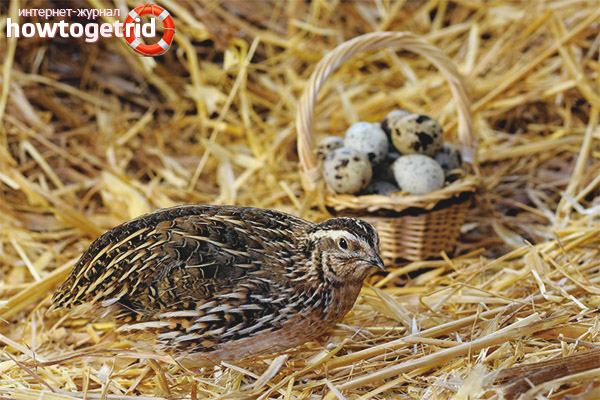
Quail eggs are considered dietary, they are necessary for children, so that the body develops better and faster, are recommended for use by patients after operations. And in general, they are just delicious. About their useful properties known since ancient times.
Quail eggs, like chicken eggs, are boiled, fried and baked.Unlike chicken, quails do not suffer from salmonellosis, so the testicles are usable and raw. They contain a lot of nutrients
There is a large amount of lysozyme in the product, which prevents the emergence of hostile microflora, so a refrigerator is not needed for storage. Eggs are stored for a long time - up to 60 days.
Useful ingredients contained in quail eggs:
- Vitamins of groups A, B, PP.
- Trace elements and macronutrients (iron, copper, a lot of calcium, phosphorus).
- Amino acids necessary for the body that work well on the skin.
Quail eggs are good because they have no contraindications to their use, they do not cause allergies and are suitable for feeding even small children. When a child eats them, his mental activity becomes better, his memory becomes stronger, his nervous system becomes more concentrated. Japanese schoolchildren eat a couple of eggs every morning before the start of classes. Doctors prescribe this product for retarded children with delayed development.
Also, this product is recommended for strengthening the tissues of bones and teeth for pregnant women. Used to support the immune system.Substances contained in quail eggs bind and remove radionuclides. This is important for people working with radioactive substances and those who are trying to fight cancer while undergoing chemotherapy. Used with success to increase potency in men
Eggshell, worn into powder, is used as a prophylaxis of rickets, with age-related fragility of bones and cases of hypocalcemia. Quail eggs are also used for cosmetology purposes - masks for the body and face are made, and masks for problematic hair are made.
Breeding and captivity
Japanese quails were first domesticated in the 15th century. And now in captivity contains many of these birds. Due to the fact that toxic chemicals are actively used in agriculture, quails are poisoned and die, therefore special nurseries have been created, where they are grown and released into the countryside. A lot of summer residents and villagers also keep these birds in a private farmstead. The main products obtained from quail breeding are eggs and meat. Some of them are eaten, others are engaged in the subsequent implementation.It is more profitable and more beneficial to contain egg-bearing birds (up to a year old), because they can lay up to 300 eggs weighing from 9 to 13 grams per year.
Keeping quail is easy, just need to take into account some little things.
- The room temperature must be maintained from 10 degrees in order not to freeze the birds.
- The light in the aviary should not be very bright and burn at least 15-16 hours.
- A regular feeding schedule should be maintained. Fatty, like hungry, individuals will be carried badly or not at all.
- It is desirable to maintain high humidity - at least 50 percent. To do this, put barrels and baths with water.
There are no divisions in layers and meat for domestic quails. The first year of life, they are actively carried, then fed for meat. For hens, males are not required, females will be able to rush without it. And if the goal is to breed poultry for meat, then a male will be needed for the appearance of the quail.
Interesting Facts
To domesticate quails in the warm Asian regions, from there they fell to the American continent, and only then began to spread throughout Europe. Modern quail (it is also called Japanese) is a family tree from those very Asian birds.Massively, the Japanese began to breed it only in the 20th century.
Quail, though a flying bird, is rarely in the air. Mostly moves on the ground using muscular paws. This distinguishes birds from other species.
They are not able to reach a decent altitude even when flying over long distances, so they fly at very low altitudes, almost above the ground. For this reason, during migration, flying over the seas and oceans, a rather large number of birds are dying - a storm or strong wind flows knock off the intended path. Birds lose their strength and fall dead into the water. Those who manage to reach the coast, lie down and lie on land, restoring strength.
People who have taken wild birds for breeding in the household should be remembered - the daily bird diet should not differ significantly from the usual one. It should contain insects, plant seeds, and so on. To feed and other products used at home, the bird is better to translate slowly.
Chickens are born tiny - about five grams, but due to the rapid metabolism they reach a fifteen-fold increase in weight in a month, and by two months the adult bird is catching up in parameters.
At the end of the 20th century, birds made a space trip. First, several quail eggs were sent into space, where they were placed in a specially created incubator. The hatchlings were brought to Earth. Later, the astronauts took with them four adult birds dressed in uniforms invented for them. Quail travelers also returned to the planet, where they lived for a long time and gave birth to offspring.
Video: Quail (Coturnix coturnix)

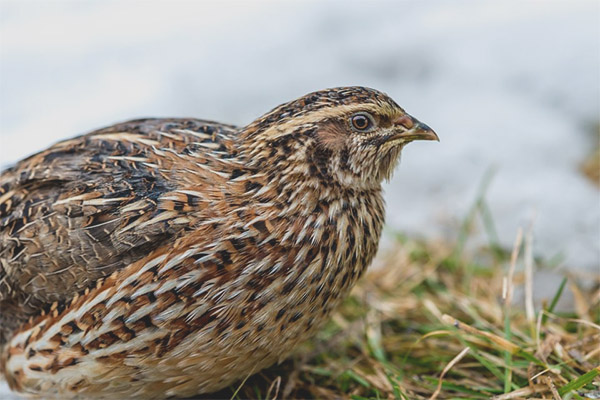
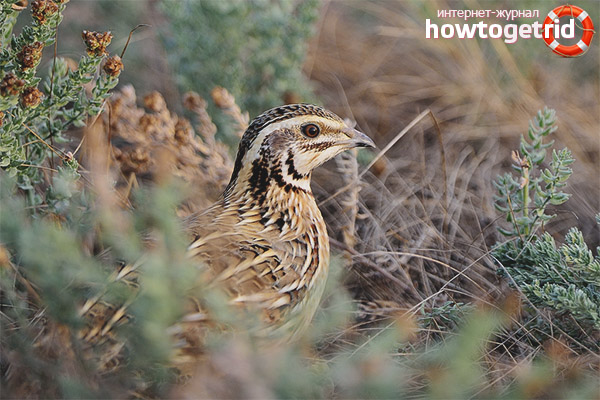
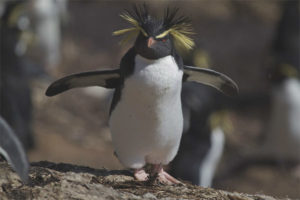
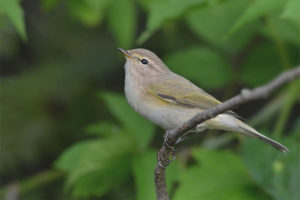
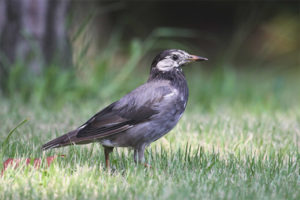
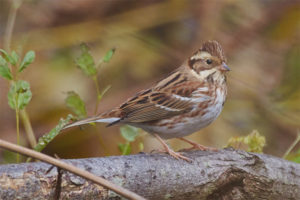
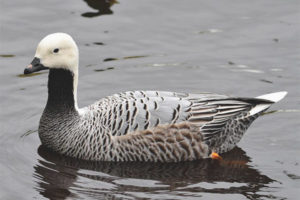
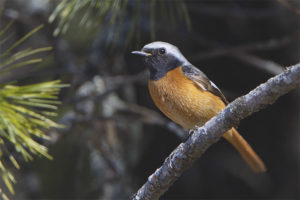
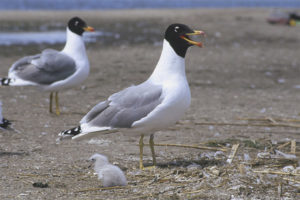
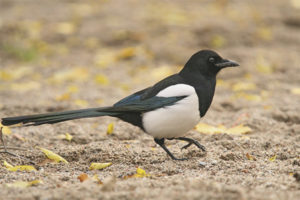
To send